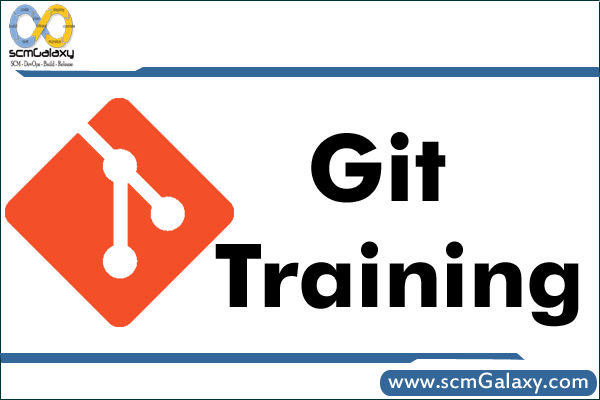

 Click Here
Click Here
scmGalaxy is a community initiatives based on Software configuration management that helps community members to optimize their software development process, Software Development Life Cycle optimization, Agile Methodologies and improve productivity across all aspects of Java development, including Build Scripts, Testing, Issue Tracking, Continuous Integration, Code Quality and more. scmGalaxy group that helps organisations optimize their software development process. We provide consulting, training and mentoring services in Agile Development Practices such as Version Management, Continuous Integration, Build Management, Test-Driven Development, Acceptance-Test Driven Development, Build Automation, Code Quality Practices and Automated Testing.
We provide job oriented training in the area of Configuration management, Build and Release Engineering. Candidates with engineering or software background and looking to either start or change their career to Build and Release Engineering, would benefit most from this training. Instructor-led training course offered in India, Bangalore, Delhi, Pune, Mumbai and Hydrabad. Instructor is an expert in Software configuration management, Build and release engineering with more than 15 years industry experience in india.The Goal of the course make the training attendants equip with all the concepts of build and release engineering.
Contact us at info@scmGalaxy.com
Course Objectives
To bring your team up to speed with agile development, We can also run the from Continuous Integration to Continuous Delivery with autoamted course within your premises.
Course Schedule
This course is an intensive 1-day & 2-day workshop with a mixture of teaching and lab exercises. Currently, this course is offered exclusively as an on-site course. Please contact us for more details.
Audience
This is a hands-on, practical course designed to teach specialised skills for real-world development situations. It is thus primarily aimed at a SCM Engineer, Build/Release Engineer and developer audience.
Approach
The course is modular and flexible – depending on specific student needs and requests. Through our trainings, you benefit from the wide experience and architectural expertise of our team. We bring that experience to you in an highly interactive, intensely hands-on setting.
Assumptions
We assume participants have a reasonable understanding of Development in any language as well as a basic understanding of the Software Development Life Cycle.
Lab Work
All our courses are above all practical in nature. We believe that the best way to learn is by doing. So the course contains approximately 80% lab work.
Learning Resources
Each registrant will receive a copy of the student notes and lab solutions, a certificate of completion, and a CD containing all the tools covered in the course and CD containing all the tools covered in the course.
Contact Us
This course is provided on-site, and can be tailored to your particular requirements. If you would like our trainings delivered at your premises, or for any additional information please contact us. Please email us at info@scmGalaxy.com
Course outline
The basic course program is outlined here:
1. What is Git?
- Understanding version control
- The history of Git
- About distributed version control
- Who should use Git?
2. Installing Git
- Installing Git on a Mac
- Installing Git on Windows
- Installing Git on Linux
- Configuring Git
- Exploring Git auto-completion
- Using Git help
3. Getting Started
- Initializing a repository
- Understanding where Git files are stored
- Performing your first commit
- Writing commit messages
- Viewing the commit log
4. Git Concepts and Architecture
- Exploring the three-trees architecture
- The Git workflow
- Using hash values (SHA-1)
- Working with the HEAD pointer
5. Making Changes to Files
- Adding files
- Editing files
- Viewing changes with diff
- Viewing only staged changes
- Deleting files
- Moving and renaming files
- Using Git with a Real Project
- Introducing the Explore California web site
- Initializing Git
- Editing the support phone number
- Editing the backpack file name and links
7. Undoing Changes
- Undoing working directory changes
- Unstaging files
- Amending commits
- Retrieving old versions
- Reverting a commit
- Using reset to undo commits
- Demonstrating a soft reset
- Demonstrating a mixed reset
- Demonstrating a hard reset
- Removing untracked files
8. Ignoring Files
- Using .gitignore files
- Understanding what to ignore
- Ignoring files globally
- Ignoring tracked files
- Tracking empty directories
9. Navigating the Commit Tree
- Referencing commits
- Exploring tree listings
- Getting more from the commit log
- Viewing commits
- Comparing commits
10. Branching
- Branching overview
- Viewing and creating branches
- Switching branches
- Creating and switching branches
- Switching branches with uncommitted changes
- Comparing branches
- Renaming branches
- Deleting branches
- Configuring the command prompt to show the branch
11. Merging Branches
- Merging code
- Using fast-forward merge vs. true merge
- Merging conflicts
- Resolving merge conflicts
- Exploring strategies to reduce merge conflicts
12. Stashing Changes
- Saving changes in the stash
- Viewing stashed changes
- Retrieving stashed changes
- Deleting stashed changes
13. Remotes
- Using local and remote repositories
- Setting up a GitHub account
- Adding a remote repository
- Creating a remote branch
- Cloning a remote repository
- Tracking remote branches
- Pushing changes to a remote repository
- Fetching changes from a remote repository
- Merging in fetched changes
- Checking out remote branches
- Pushing to an updated remote branch
- Deleting a remote branch
- Enabling collaboration
- A collaboration workflow
14. Tools and Next Steps
- Setting up aliases for common commands
- Using SSH keys for remote login
- Exploring integrated development environments
- Exploring graphical user interfaces
- Understanding Git hosting
Conclusion
Git Training In Bangalore | Git Training in India | Git Training in Hydrabad | Git Training in Delhi | Git Training in Pune | Git Trainer In Bangalore | Git Trainer in India | Git Trainer in Hydrabad | Git Trainer in Delhi | Git Trainer in Pune
I’m a DevOps/SRE/DevSecOps/Cloud Expert passionate about sharing knowledge and experiences. I am working at Cotocus. I blog tech insights at DevOps School, travel stories at Holiday Landmark, stock market tips at Stocks Mantra, health and fitness guidance at My Medic Plus, product reviews at I reviewed , and SEO strategies at Wizbrand.
Please find my social handles as below;
Rajesh Kumar Personal Website
Rajesh Kumar at YOUTUBE
Rajesh Kumar at INSTAGRAM
Rajesh Kumar at X
Rajesh Kumar at FACEBOOK
Rajesh Kumar at LINKEDIN
Rajesh Kumar at PINTEREST
Rajesh Kumar at QUORA
Rajesh Kumar at WIZBRAND

 Starting: 1st of Every Month
Starting: 1st of Every Month  +91 8409492687
+91 8409492687  Contact@DevOpsSchool.com
Contact@DevOpsSchool.com

